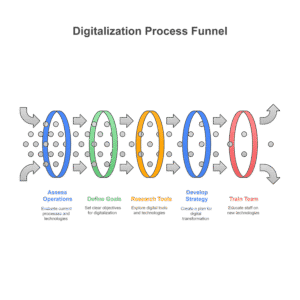In today’s rapidly changing digital landscape, every organization understands that transformation is no longer optional—it’s essential. Yet, many businesses struggle to move from vision to execution. That’s where a digital transformation roadmap comes in. It serves as a strategic guide, helping companies align technology, people, and processes toward measurable progress and long-term growth.
This article explores what a digital transformation roadmap is, why it’s important, and how businesses can build one that delivers real results. A clear digital transformation roadmap helps organizations connect business goals with modern technology.
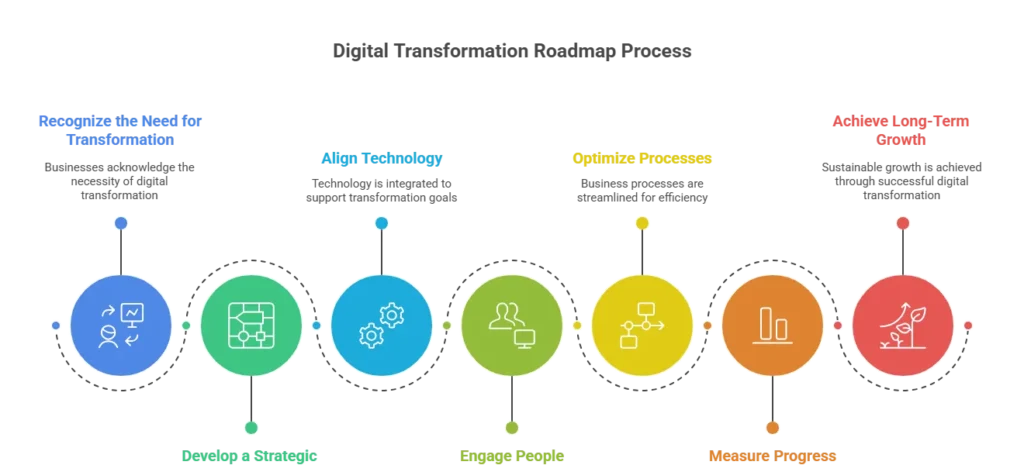
What Is a Digital Transformation Roadmap?
A digital transformation roadmap is a structured plan that outlines how a company will adopt and integrate digital technologies across its operations. It provides a clear path from the current state to the desired future state—covering everything from initial assessment to full implementation.
Instead of rushing into new technologies, a roadmap ensures that every step is aligned with business goals. It helps decision-makers prioritize initiatives, allocate resources effectively, and monitor progress at every stage.
Simply put, it’s the blueprint that turns digital ambition into achievable action.

Why Every Organization Needs a Roadmap
Digital transformation is a complex process. Without a roadmap, companies risk fragmented efforts, wasted budgets, and unclear results. A well-structured roadmap offers several advantages:
1. Clear Direction and Alignment
It ensures everyone—from leadership to employees—understands the goals, priorities, and milestones of the transformation journey.
2. Measurable Progress
With defined phases and KPIs, businesses can evaluate performance and adjust strategies as they move forward.
3. Reduced Risk
A roadmap minimizes the risk of costly missteps by testing and validating solutions before full deployment.
4. Improved ROI on Technology
When technology adoption follows a strategic plan, it delivers higher efficiency, better data visibility, and stronger returns on investment.
A well-structured roadmap is the foundation of effective digital transformation services that deliver measurable outcomes.
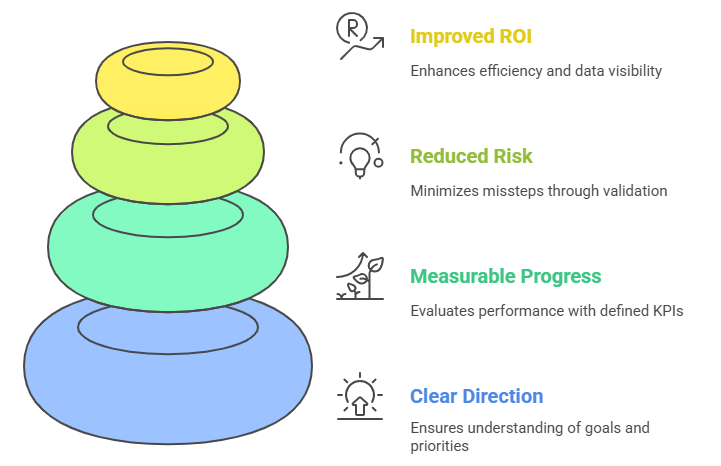
Key Stages of a Digital Transformation Roadmap
A well-designed digital transformation roadmap typically unfolds in several key stages:
1. Assessment and Vision
The process begins with a thorough assessment of the organization’s current state—its systems, culture, and digital maturity. This stage identifies existing gaps and opportunities for improvement.
2. Strategy and Goal Setting
Next comes defining the vision and goals. What does the organization want to achieve? Whether it’s operational efficiency, customer experience, or innovation, clarity at this stage shapes the entire transformation journey.
3. Technology Selection
Once goals are set, the next step is choosing the right technologies—cloud solutions, data analytics tools, automation platforms, or AI-driven systems—that align with the company’s objectives.
4. Implementation and Integration
At this stage, digital initiatives move from planning to action. It’s about rolling out solutions in phases, ensuring seamless integration with existing infrastructure, and training teams for adoption.
5. Continuous Improvement
Digital transformation doesn’t end with implementation. Continuous evaluation, optimization, and scaling ensure that the roadmap evolves with new market demands and emerging technologies.
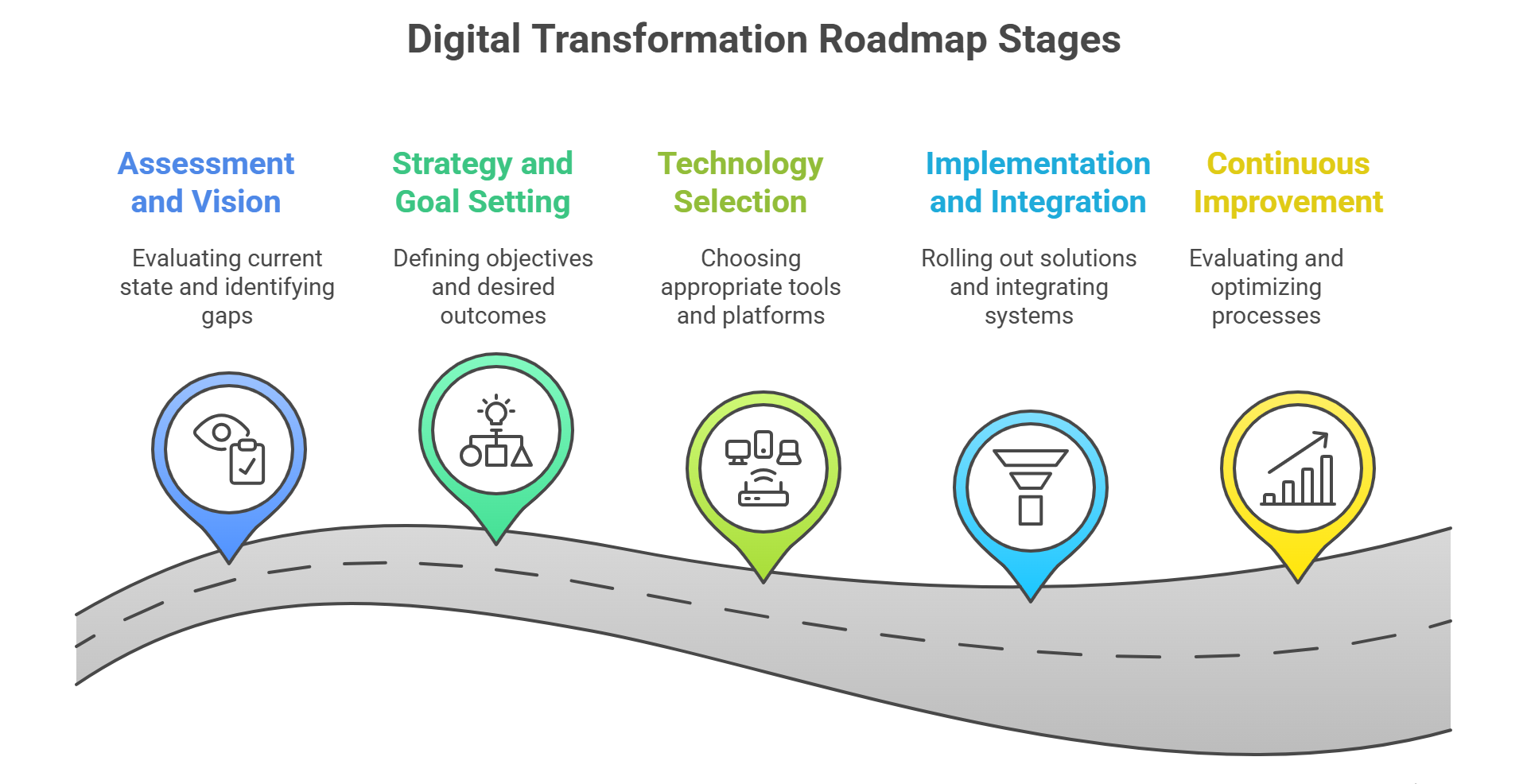
Choosing the right technologies—such as scalable cloud-based solutions or AI-driven systems—ensures that your roadmap supports long-term business growth.
Common Challenges in Digital Transformation
Even with a roadmap, challenges often arise. Some of the most common include:
Cultural resistance: Employees may resist new tools or workflows.
Legacy systems: Older infrastructure can limit integration with modern platforms.
Lack of leadership buy-in: Without executive support, initiatives often lose momentum.
Poor change management: A lack of structured communication can slow down adoption.
Addressing these challenges requires a mix of leadership commitment, continuous learning, and collaboration across departments.

Building a Successful Digital Transformation Roadmap
While every organization’s journey is unique, certain principles consistently lead to success. According to SoftifyMe, a trusted partner in digital innovation, the following steps are essential:
1. Start with a Clear Vision
SoftifyMe emphasizes the importance of defining the “why” behind transformation. Understanding the business purpose helps maintain focus and justify every investment.
2. Engage Stakeholders Early
Transformation is most effective when everyone—from IT to operations to marketing—is involved in the conversation from the start.
3. Choose Scalable Technologies
SoftifyMe guides organizations toward tools and platforms that grow with their business needs, ensuring flexibility and long-term efficiency.
4. Prioritize Data and Analytics
A data-driven roadmap allows for informed decisions. Measuring success based on analytics ensures continuous improvement and transparency.
5. Stay Agile and Adaptive
Digital transformation isn’t a one-time project—it’s a journey. SoftifyMe helps clients stay agile, adjusting the roadmap as technology and business landscapes evolve.
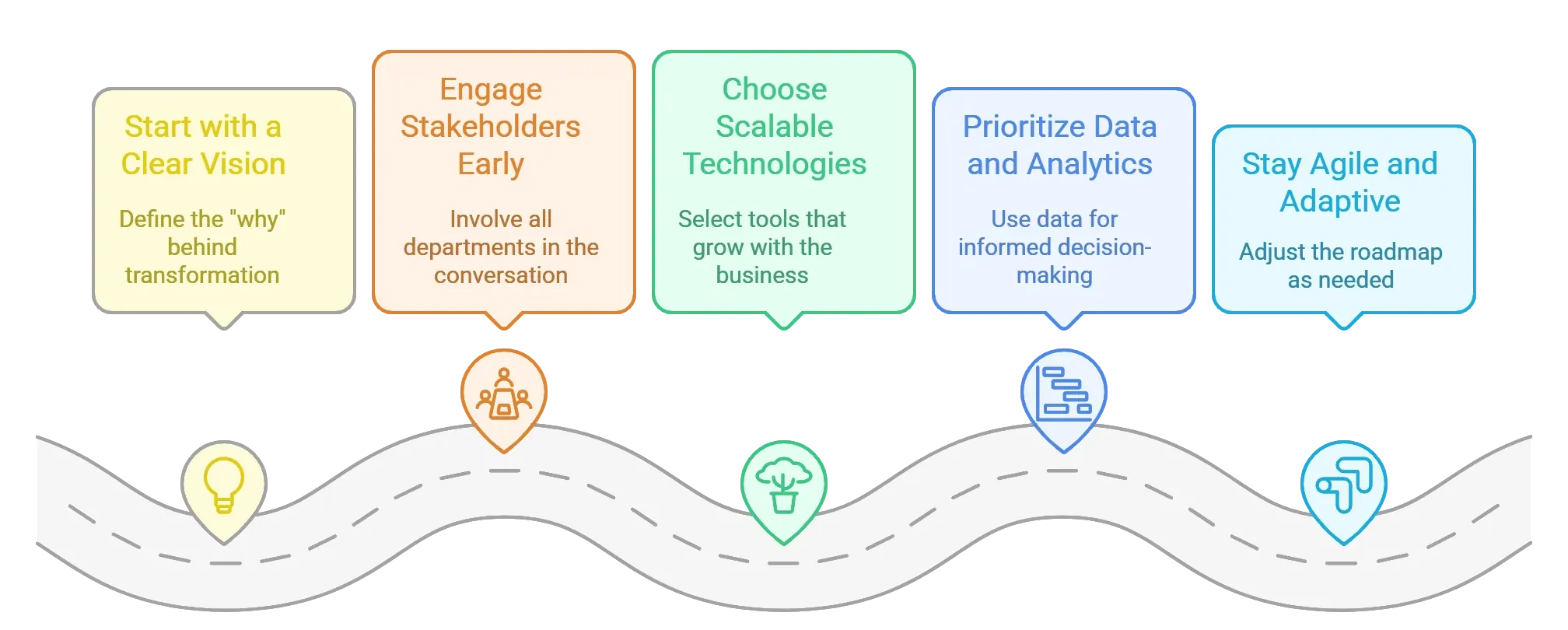
SoftifyMe’s custom software development expertise helps businesses integrate new technologies seamlessly into their digital transformation roadmap.
Why Partner with SoftifyMe for Your Digital Transformation Journey
SoftifyMe has been helping organizations across industries design and execute effective digital transformation strategies. Their team combines technical expertise with business insight to create tailored roadmaps that drive measurable impact.
From assessing digital maturity to integrating scalable solutions, SoftifyMe ensures every stage of transformation is backed by clarity, efficiency, and innovation. The result is a future-ready business that thrives in a digital-first world.

Conclusion
A digital transformation roadmap isn’t just a plan—it’s a commitment to progress. It bridges the gap between strategy and execution, helping businesses navigate change with confidence and purpose. With a clear roadmap and the right partner, organizations can turn digital challenges into opportunities for growth.
For companies ready to redefine their future, SoftifyMe offers the guidance and expertise to make digital transformation a success—step by step.
Take the Next Step in Your Digital Transformation Journey
Building a successful digital transformation roadmap starts with the right expertise and guidance. SoftifyMe helps organizations turn complex challenges into clear, actionable strategies that drive measurable growth.
Whether your business is just beginning its digital journey or looking to scale existing initiatives, SoftifyMe’s experienced team can help you define your vision, align technology with your goals, and implement solutions that deliver real impact.
Start designing your roadmap to success today.
Contact SoftifyMe to discuss your digital transformation goals and discover how tailored strategies can move your business forward.

